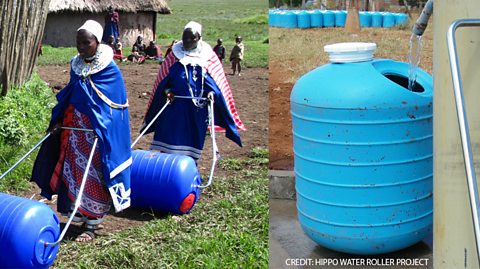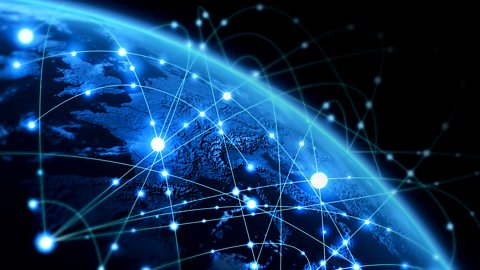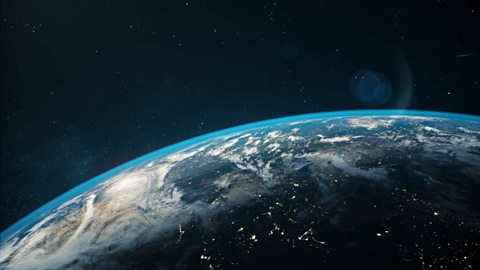Sustainable Development Goals
In 2015 the United Nations agreed a set of ÔÇÿsustainable developmentÔÇÖ goals that were focused on ending poverty around the world, protecting the planet and ensuring a new prosperity for everyone.
The 17 sustainable development goalA set of targets agreed by the United Nations that were aimed at ending poverty around the world, helping to protect the planet and ensuring a new prosperity for everyone. or the ÔÇÿGlobal GoalsÔÇÖ included over 169 targets that would ensure that all of the countries of the world would work to protect the planet.
The range of the goals showed that world leaders were intent on making big changes to the world as each of these goals was to be applied universally to all countries.
The goals were aimed at stimulating action across the world over the next 15 years for:
- People - to end poverty and hunger in all of its forms so that people would be able to fulfil their true potential in dignity and equality.
- Planet - to protect the planet from degradation and to make sure that the world became increasingly sustainable and was managing its natural resources carefully.
- Prosperity - to ensure that all people would be able to lead prosperous lives in harmony with nature.
- Peace - to ensure that peaceful societies would be free from fear and violence.
- Partnership - to mobilise the means and money to support this agenda.
Sustainable Development Goal 1: No poverty
End poverty in all its forms everywhere
Extreme poverty rates have been reduced by more than half since 1990 but the reality is that one in five people in LEDCLess Economically Developed Country ÔÇô usually a poorer country found in South America, Africa or Asia.still live on less than $1.25 a day. The United Nations note that 836 million people still live in extreme poverty.
Key targets for 2030:
- Eradicate extreme poverty everywhere
- Implement social protection systems for all
- Ensure that all men and women have equal rights to economic resources and access to basic services.
- Implement programmes and policies to end poverty.
By 2030, it is hoped that poverty will be a thing of the past and that many of the people who live in LEDCs have been ÔÇÿliftedÔÇÖ into better lives.
Sustainable Development Goal 3: Good health and wellbeing
Ensure healthy lives and promote well-being for all at all ages
All over the world, there have been massive improvements in life expectancies. Even in LEDCs, people are now living well into their 60s.
There are now cures and treatments for many common diseases that will keep people alive for much longer. However, there is still a lot more research that can be done to allow people healthy lives.
Key targets are:
- By 2030, end preventable deaths of new-borns and children under 5 years of age.
- By 2030, end the epidemics of AIDS, tuberculosis, malaria and neglected tropical diseases.
- By 2030, reduce by one third premature mortality from non-communicable diseases through prevention and treatment and promote mental health and well-being.
- By 2030, ensure universal access to sexual and reproductive health-care services, including for family planning, information and education.
- Achieve access to quality essential health-care services and access to safe, effective, quality and affordable essential medicines and vaccines for all.
- By 2030, substantially reduce the number of deaths and illnesses from hazardous chemicals and air, water and soil pollution and contamination.
Healthcare is often seen as the preserve of the rich and the aim here is that over time more people in the LEDC world will get access to improved care so that the six million children that die before their fifth birthday will be able to live much longer and more fulfilled lives.
Sustainable Development Goal 4: Quality education
Ensure inclusive and quality education for all and promote lifelong learning
Education is the foundation for improving peopleÔÇÖs lives and sustainable development.
Many of the advances in these areas have focused on improving basic literacy skills but often this needs to go much further.
Key targets are:
- By 2030, ensure that all children complete free primary and secondary education.
- By 2030, ensure that all children have access to quality early childhood development, care and pre-primary education.
- By 2030, ensure equal access for all women and men to affordable and quality technical, vocational and tertiary education.
- By 2030, eliminate gender disparities in education.
- Build and upgrade education facilities that are child, disability and gender sensitive and provide safe learning environments for all.
- By 2030, substantially expand globally the number of scholarships available to developing countries for enrolment in higher education.
An educated, youthful workforce can make a huge difference to the economic fortunes of a country and this can raise their development levels significantly.
Evaluation of Sustainable Development Goal progress
The progress report on SDGs in 2023 marks the halfway point to meeting these goals which were to be delivered by 2030. There have been lots of challenges since the SDGs were set:
- the climate crisis has got worse
- there have been global conflicts
- the world has experienced the Covid-19 pandemic
- economic prospects look gloomy around the world.
That report indicates that, of the 169 individual targets, just 15% are met or on track to being met, 48% look as if they will not be met and, for the last 37%, there has been no progress or things have got worse.
There have been some success stories, particularly in reducing infant mortality, but much more needs to be done if the goals are to be met.
Appropriate technology
Appropriate technology is one that is suited to the needs, skills, resources, wealth and knowledge of the people who live in a local area, for the environment in which they live.
Many LEDCs find that hi-tech and energy-based solutions are not appropriate to the needs of the people as they will have to use unsustainable/non-renewable energy sources or would find it difficult to find replacement parts.

The Hippo Roller was invented in 1991 in South Africa to help make water more accessible to women and children living in rural Africa.
The roller is a 90 litre plastic water carrier that can be rolled along the ground using a metal handle. It reduces the effort of carrying water long distances.

What problem does it solve?
Over 1.2 billion people live in areas where water resources are scarce. In Africa, over 40% of households do not have access to piped-in water.
People have to walk long distances with buckets and jerry cans on their heads. This can have long-term impacts on health as they can develop neck and spine injuries.
Women are left to collect the water which leaves them no time to make money. Many children are also involved which keeps them out of school.

Advantages
- The 90kg drum weighs just 10kg when rolled on level ground ÔÇô making it much easier for people to move from one place to another.
- The large opening means that it can be easily cleaned and will store water in a hygienic manner.
- The drum is made with thick plastic that should last for between 5 and 10 years.
- The design is maintenance-free and should support daily use over a long period of time.
- There is no need for any spare parts, washers or rubber seals that might break down over time.
- One drum is equivalent to 5 buckets of water ÔÇô which will save people time and effort in collecting water ÔÇô thus releasing them for education or employment.
Disadvantages
- Each roller costs about $125 ÔÇô which is too expensive for most people to buy so any users rely on getting these fromnon-governmental organisationAn organisation that does not work for the government, eg a charity. and charities.
- The rollers do not stack easily, which makes bulk transport costly.
- The project is currently funded through social funding and community fundraising.
- In 2017 it was estimated that 51,000 Hippo rollers had been given out.
- Some argue that this is nothing new ÔÇô it is just a plastic barrel that holds water and it would be better to spend money on creating better access to clean drinking water or digging wells.
Fair Trade in LEDCs

Fair trade is a recent global movement which tries to make some elements of trade much fairer.
In most cases the emphasis will be on trying to ensure that producers in LEDCs get much better trading conditions, a better wage and become increasingly sustainable.
The farmers and workers at the bottom of the supply chain, who actually work with the raw materials, will be given a guaranteed price and a fair reward for their efforts.
This means their quality of life should improve, as well as the long-term prospects for their children.
fair tradeA way of buying and selling products that ensures that the people who produce the goods receive a fair price. products sometimes cost more in supermarkets in MEDCMore Economically Developed Country ÔÇô usually a rich country found in Western Europe or North America., but many consumers consider this a small price to pay for the benefits they bring.

Benefits of fair trade
- Stable prices: Most fair trade products will have a fair trade minimum price that should cover the full costs of sustainable production ÔÇô even if there was a fall in global prices.
- Fair trade premium: Producers are paid a premium or an extra amount of money beyond the price of the goods so that the farmer/producer can invest in further machinery, seeds, education, healthcare or farm improvements. This social premium usually benefits the entire community, not just the fair trade farm.
- Partnership: Producers will be much more involved in the decision-making processes that affect them. They can be involved in fair trade councils and committees that can make local decisions.
- Empowerment: Many fair trade marks and organisations have been set up to help empower the small-scale farmer. Some products, such as coffee, cocoa, cotton and rice will certify farmers to be part of a fair trade council or organisation. This means that the farmers can get better representation and marketing for their product and they will also benefit from better working conditions and support for environmental sustainability.
- Environment: Many fair trade organisations have led to massive improvements in environmental standards. Farmers are encouraged to cut down fewer trees and to protect their local environment and soils and they will be supported and paid to achieve this.
- Child labour: Fair trade organisations have banned child labour ÔÇô they are keen to support the education rather than the exploitation of children.
- Access to new markets: Fair trade organisations also help farmers to reach new markets with their product.
Activity: Take the test
More on Contrasts in world development
Find out more by working through a topic
- count3 of 3

- count1 of 3
